(Get free painting tips and plein air painting techniques sent straight to your inbox or on my social media.)
I recently tried aluminum painting panels for a small oil painting sketches and quite liked it. I did some research on these panels and they seem quite promising and to offer advantages over many other painting supports from the archival point of view.
I recommend you take a serious look at these if you are a professional selling your work.
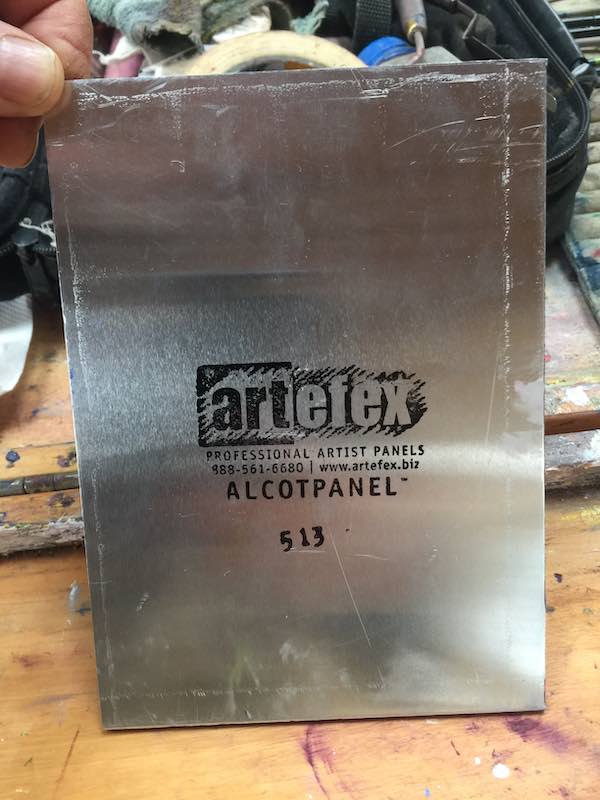
An Introduction To Painting On Aluminum Panels
A more recent type of painting support as an alternative to traditional canvas or linen are aluminum painting panels. These are thin panels of aluminum that have been prepared specially to receive paint. Aluminum art panels are quite rigid and relatively lightweight painting surfaces.
Two Approaches To Using Aluminum Painting Panels
There are basically two ways of using aluminum painting panels:
- Paint directly on the surface, after it has been primed.
- Paint on traditional linen or cotton that has been glued to the aluminum panel
The Benefits Of Painting On Aluminum Panels
Painting on an aluminum panel has many key advantages. The first two of these makes it an idea choice if cost is not a key issue.
Pros
- stable with changes in humidity or temperature
Aluminum painting panels react very little to changes in humidity and temperature. This is in contrast to traditional wood panels and canvas which both expand and contract with a change of temperature or humidity and so damage the painting surface. This is the single most important feature of aluminum painting supports that makes them more archival than other painting supports. This means you can store them in damp studios where traditional painting surfaces would warp. - robust
Unlike MDF and HDF (medium/high density fiberboard), aluminium painting panels will not easily damage if they are dropped. - does not release gases
Unlike medium and high density fiberboards that have been treated with formaldehyde, aluminum painting panels will not release gases over time. See https://pubs.acs.org/doi/abs/10.1021/acs.est.5b02217 - exposed areas won’t tarnish
You can leave areas on aluminum painting panels exposed, and the material will not tarnish due to its resistance to oxidation. - lightweight
Aluminum panels are quite lightweight and so ideal for large artworks which need to be transported. However for plein air painting, they are heavier then gatorboard panels to which linen has been glued.
Cons:
- expense
Aluminum panels are more expensive than panels made from MDF and HDF (medium/high density fiberboard).
How To Prepare An Aluminum Painting Panel
You can buy these panels already ready to paint on from an art supply store. In that case the panel has either a primer coat or has linen/canvas glued to it and you do not have to do anything. Just go ahead and paint on that surface.
But if you have just bought the aluminum panel and it is not already prepared for painting on, follow these steps:
- The first step is a very light scuff sanding to increase the adhesion of the primer. Use a fine grit sandpaper (at least 320). It is easier to wet-sand the panel to avoid getting dust everywhere, so use special we-sand paper. It is faster, the paper doesn’t clog up, and there is no dust.
Caution: Do not sand all the way through the polyester coating, something that is easy to do. This is a bad thing. Just lightly rough up the surface (it should be just a little more matt than it was when it was new, but it will still feel smooth) but do not expose the aluminum. - Once the sanding is done and the panel is clean (try not to touch it with your hands) make sure it is dry
- 3M, the company that manufactures the panels (3M) recommends a thin coat of DTM primer before you prime it with an oil ground. This DTM primer is formulated to bond to the polyester coating on the panel and provide a surface that will take the oil primer better. A one gallon can cost around $120 but it should prime a lot of panels. One light coat is enough.
- Apply primer coats to panels
Tip: finish with light brush strokes in random directions so there are no distracting vertical or horizontal marks that might show through in the final painting. When you use a linen, or canvas support, the texture of the material hides the brush strokes of the primer coats, but all these marks are visible on these very smooth aluminum panels. A good primer is Rublev Lead Oil Ground (from Natural Pigments in California). I like an oil primed surface to paint on because it has just the right amount of absorbency and takes the paint beautifully.
Caution: The primer has lead in it so take obvious precautions such as wearing gloves to avoid absorbing lead through your skin, and not eating it! Apply two thin coats straight out of the can and let the primer dry completely between the coats.
Thank You
Thank you for taking the time to read this article. I hope you find it useful. If you would like to get free painting tips by email, please sign up for my free tips newsletter.
If you are interested in a structured approach for learning how to paint, take a look at my online painting classes.
Happy painting!
Barry John Raybould
Virtual Art Academy
What The Students Are Saying
I’m Richard Robinson …. best online art training available on the internet today

In my opinion Barry has created the best online art training available. I found the Virtual Art Academy course of painting lessons many years ago and was so inspired by it that I contacted the author and got to know him personally.
Two Critical Keys
If you are looking (like I did) for the best painting course available there are two key things you should know about the Virtual Art Academy course which make it stand out above the other online painting courses available today:
1. It’s Comprehensive.
It covers ALL the key painting concepts and then goes further, revealing more and more painting insights. Most courses miss a LOT out – this one doesn’t.
2. It’s easy to understand.
All that information could easily become confusing, but each piece is laid out clearly and concisely using Information Mapping® making it a pleasure to learn.
If you can find another painting course which does these 2 things better, please let me know. As I said, I have been searching for many years and continue to do so, so you could save yourself a lot of precious time and money by joining the Virtual Art Academy today.
Read more “I’m Richard Robinson …. best online art training available on the internet today”
Building blocks of learning is the best I have seen

Read more “Building blocks of learning is the best I have seen”
A great learning platform

The improvement in my own work reaffirms that I’ve found the right program to develop as an artist

The course is for beginners, intermediate and advanced artists

Read more “The course is for beginners, intermediate and advanced artists”
First quality education, materials, layered learning systems, feedback loop and social support and lifelong learning – amazing
Thank you again for such an amazing program and opportunity. I wish you continued and even greater success. You have contributed to many many people… thank you from all of us.
The most comprehensive art instruction I could find anywhere online, and trust me, I had been looking for a long time.

The Virtual Art Academy is simply the most comprehensive art instruction I could find anywhere online, and trust me, I had been looking for a long time.
Even art schools and academies I’ve been exposed to are nowhere near as thorough, VAA is just amazing!
Most paintings I see where the artist clearly has some skill still lack in either the values or notan department, or fall down on composition – it’s baffling that VAA seems to be the only program that goes into detail on this. Therefore, if you are new to painting or an experienced artist, studying with VAA will get you to that next step.
I also find that Barry is always interested in what we students do and is at hand with great advice. Worth every penny, Thank you Barry!!
The sky’s the limit

‘Ladder of Learning’ adds to overall positive experience of this awesome course

Read more “‘Ladder of Learning’ adds to overall positive experience of this awesome course”
Fantastic lesson plans, and a vibrant community
The Virtual Art Academy is the perfect art course I’ve been searching for. Barry’s decades of knowledge are condensed into fantastic lesson plans, creating a vibrant community. The apprentice course delves deep into drawing, painting planning, and color theory. It’s like obtaining an art degree at my own pace and more affordably. The structured format encourages interaction and feedback, enhancing the learning experience. Overall, a fulfilling way to study art from home.
An excellent foundation on so many aspects of painting

When I got word of the course available through Virtual Art Academy, I was very excited for the opportunity to learn what I never knew about painting. VAA has provided me an excellent foundation on so many aspects of painting. The course is organized very logically, provides great examples, diagrams, thorough explanations and worthwhile assignments. I highly recommend this course to anyone with a desire for an in-depth education of art.
Thank you again, Barry, I love this course Jeanne
Read more “An excellent foundation on so many aspects of painting”
It is wild to see how much I am learning in this course!

I retired last year, and decided I wanted to spend my time in retirement learning how to oil paint. But having never painted before, I wasn’t even sure what to look for in an online painting course. However, I did some searches for “Best Online Oil Painting Courses,” and found several references to VAA.
I signed up for VAA’s ongoing Apprentice Program last October (2023), and I am incredibly glad I did! As a beginner, I didn’t know what I didn’t know, but I didn’t have to: VAA has already mapped it all out for me. It starts out with basic, fundamental stuff, but also teaches me the THINKING that goes in the painting: the composition, my color choices, how to consciously select which darks and lights need to be emphasized, etc.
Bottomline, I am learning how to create paintings that have both visual music and poetry, and it is super fun to see my growth! I cannot recommend this course enough!
Read more “It is wild to see how much I am learning in this course!”
comprehensive art education

I started learning oil painting with VAA from scratch. Just one year later my paintings started to sell

This is a far more superior school than anything I have seen being taught at colleges across the country

It is impossible to fail or gain little through extensive 4 year study at VAA!
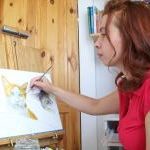
Read more “It is impossible to fail or gain little through extensive 4 year study at VAA!”
What I learned from 10 years with VAA
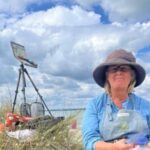
It does mean you have to look at things differently in the beginning but it is really exciting to learn a new, simpler way of painting- its all about VALUES!!!
It all seems a bit strange, making Notans, outline studies, value studies all in greys, colour maps, ie not painting a pretty picture in colour, but you must trust the experts and just do it. It’s all about being able to see the big shapes and values which takes, in my case, a long time for the brain to learn how to do. Once you see, it the lightbulb goes on and everything clicks into place.
Be patient, do the exercises, trust the process and you will get good results. I did as Barry suggested and just worked through the exercises in my sketchbook from life, I didn’t paint pictures for long time. I stayed on values studies for a very long time and found I was enjoying painting again.
It’s ok to take your time. Just keep working and try to find a routine for studying, keep at it. After a long time working like this I am now getting pictures into Art Societies in London (The Chelsea Art Society and the The Mall Galleries- RBA, NEAC and Pastel Society) selling them and even winning prizes. I’ve joined Plein Air groups in London and Surrey (which are free) met and made new friends and am part of a community of like-minded artists which is important to me and makes me happy.
Georgie Rey
https://www.artmajeur.com/georgina-rey
The course has a steady learning curve that keeps revealing itself as you advance

Read more “The course has a steady learning curve that keeps revealing itself as you advance”
No need to buy expensive art books…. Just do the VAA 4 year course. I still refer to it

Read more “No need to buy expensive art books…. Just do the VAA 4 year course. I still refer to it”
Since I started the programme I can see improvements in my composition and use of colour

I have been working through the VAA course for over five years and would highly recommend it to anyone wanting to improve their painting. There is a huge amount of information on the site and it is well presented and regularly updated and added to. When other members have commented on work I have posted I have found it really useful. When I review my work over the time since I started the programme I can see improvements in my composition and use of colour.
Read more “Since I started the programme I can see improvements in my composition and use of colour”
Barry gave me a fishing rod so I can catch my own fish

Read more “Barry gave me a fishing rod so I can catch my own fish”
The small steps are easy to do

The most comprehensive, in depth and well-organized painting course available online

Read more “The most comprehensive, in depth and well-organized painting course available online”
VAA, the ultimate art course
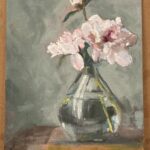
The equivalent of a 4 year art education at a fraction of the cost

Read more “The equivalent of a 4 year art education at a fraction of the cost”
It is a real course that trains you in a structured way

Read more “It is a real course that trains you in a structured way”
Only online learning program I have ever discovered using a training industry best practice
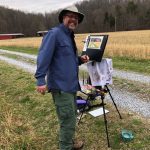
VAA is the only online learning program I have ever discovered using a training industry best practice of incorporating Knowledge and Skills to support learning a new activity. Every building block (Drawing, Form, Observation, Concept, Notan, Composition, Colour, Brushwork) incorporates a “spiral learning” approach where you are introduced to the Knowledge/Skill at one level and then reintroduced to it again elsewhere in the curriculum. Sure genius.
I’ve attended workshops, read books, and watched YouTube videos — and none of them provide the scaffolded approach to learning the VAA offers. If you are just starting your painting journey, start here. If you are a mid level or advanced painter, start here. There is a sense of community with artists around the globe. You are part of a peer to peer learning process bigger than yourself.
As a result of the VAA, I have been juried into several shows, am represented by a local gallery and have been selling my paintings on a consistent basis. VAA curriculum’s approach will grow your ‘artist’s brush’ and aid you in finding your artistic voice. As your basics improve, your art improves. Henry Hensche said, “There is study and there is performance, and we should not confuse the two, study is done for perceptual development, our performances show us where we are in that development, and we must have both…”. VAA curriculum offers both.
I went through the entire curriculum, did every every exercise, and today review my printed books/exercises on an annual basis to keep myself fresh and ready for my next painting adventure.
Onwards/Sideways,
Jay “jbird” Holobach
https://www.jayholobach.com/
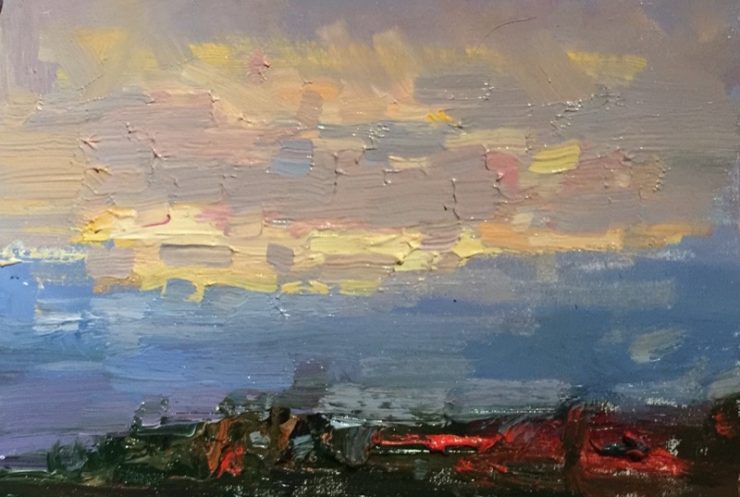
I’m trying to find info on how to hang these panels. My gallery will need them to be ready to hang. Will I need to frame every piece? I’m having trouble finding good info on simple hanging options.
The best way is to glue an aluminum hanger plate to the back of the panel. If the painting is large, then glue an aluminium back frame because it will be stronger. Google ‘aluminum back frame’ for details.
Barry
Teally interesting and informative, thanks for sharing Barry.
Thank you – that was a really interesting helpful read. I have seen these but actually didn’t know what they were for – there was no description and I can’t remember the price (euros anyway). Have just moved from France to Scotland and everything still in boxes but I shall consider this next year. I assume ghey come in various sizes?
Interesting, although I beg to differ regarding the effect of temperature. Aluminimum will not warp with humidity or heat, but its coefficient of expansion being higher than that of wood might it not end up stretching and compressing the paint under varying temperature conditions (e.g. a sunny outdoor spot) leading to stress and cracks in the paint in the long term?
Yes you are quite right Nancy. The thermal coefficient of metal is about ten times (?) that of wood I think. Although this thermal coefficient differs greatly depending on the direction of the grain. The confusion probably lies in the fact that humidity also changes with temperature so that there are in fact two variables at work simultaneously. Expansion due to humidity though is much greater than that due to temperature whatever the thermal coefficient, so that is why aluminum is a much better substrate than wood and causes less paint damage. I will do more research on this and update the article with what I find.
I got the answer from an expert in the field on this (George O’Hanlon). Here is the data on the coefficient of expansion of aluminum painting panels. The key is the difference in expansion between the oil paint and the substrate. Apparently the linseed oil expands more than the aluminium painting panel. The mathematics of it are in this article: https://paintingbestpractices.com/which-expands-more-with-temperature-paint-or-metal/
Thank you for teaching me about aluminum panels. I had no idea!
did you gesso the panel first?
the panel I used had a cotton or linen canvas already glued to it. But yes, you would need to prepare the aluminum surface first. I’ve added a section on priming it to the article.